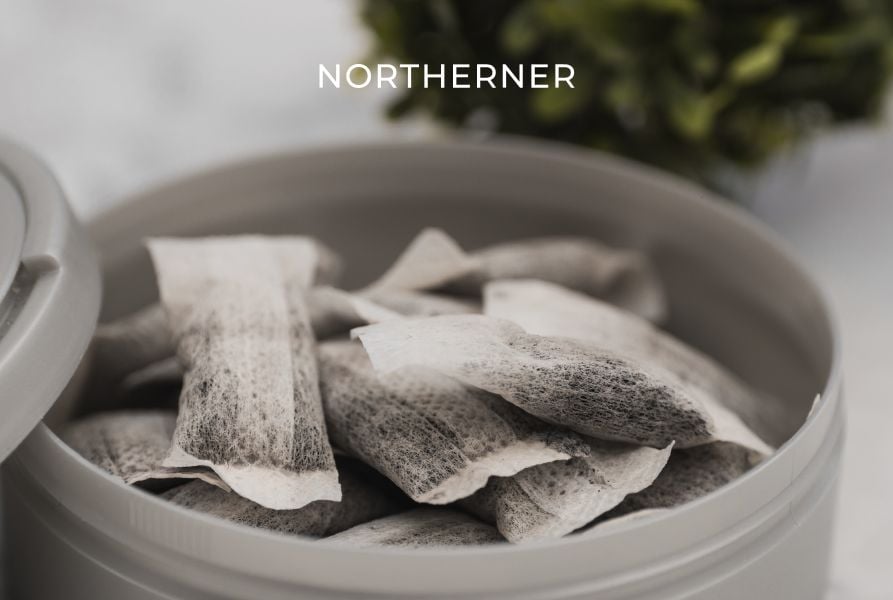What is Snus? A Complete Guide
Snus has been growing in popularity in the US over the past decade, but has been around for centuries in Europe (especially Sweden). In this comprehensive guide, we will deep dive into the world of Snus, a smokeless tobacco product that has gained popularity among oral tobacco enthusiasts. This guide will provide you with valuable insights, exploring the various types and flavors of snus, discussing its strength and nicotine content, delving into its history and origin, and even reviewing its legal status across the globe.
What is Snus? An Overview
Before we dive into the details, it is good to define “what is snus?”
To keep it brief, snus is a smokeless tobacco product that originated in Sweden and has gained popularity worldwide, including in the US market. It consists of moist, finely ground tobacco that is either used loose or (more commonly in the US) packed into small pouches. Snus is used by placing it under the upper lip, allowing the flavors and nicotine to be released and absorbed through the lining of the mouth (also known as the oral mucosa). It offers a convenient and smoke-free product for oral tobacco users, giving the tobacco without the need for spitting or inhaling smoke. Snus comes in various types, flavors, and strengths that vary from brand to brand and based on where the product is made.
A Short History of Snus
The history of snus traces back to 18th-century Sweden. It gained popularity as it was a convenient alternative to smoking a pipe (plus in many cases it was cheaper) and was embraced by people across Sweden. In later years, when more Swedish people began emigrating to the U.S., they brought Swedish snus with them across the Atlantic and using snus became one of the many Swedish traditions that carried on even in their new lives in the U.S. Using snus became common in the areas where the Swedes settled which is why the main street of many of these districts gained the nickname “Snus Boulevards” from the Americans. Over time, snus has been developed, with both Swedish snus (the same brands that been around for centuries, such as General) and American snus (a newer range of snus developed to suit the American palette, with brands such as Camel leading the way) staying a popular choice with oral tobacco users.
Types of Snus
There are different types of snus, each offering its own unique characteristics by how it is made as well as flavours and portion sizes, so there are many options to choose from. Let's explore the main types of snus you can find and define some of the snus product lingo commonly used.
|
Swedish Snus |
Loose Swedish Snus |
American Snus |
|
| Format | Finely ground tobacco in pre-portioned teabag-like pouches | Finely ground tobacco in loose form | Finely ground tobacco in pre-portioned teabag-like pouches |
| Portion Size | Small, pre-portioned pouches | Customizable portions (as you make your own) | Different size options, but the pouches are often larger |
| Flavor | Focus more on tobacco flavor, with some flavorings added in some products (such as General Wintergreen) | Focus more on tobacco flavor, with some flavorings added in some products | Focus on disguising the tobacco flavor with added flavorings (such as wintergreen and mint) |
| Moisture | Moist | Moist | Usually drier in comparison (but varies between brands) |
| Available in the US? | Yes | Not really (closest alternative is dip tobacco) | Yes |
|
Top Brand |
General |
General |
Camel |
Swedish Snus
Swedish snus is a smokeless tobacco product originating from Sweden. Swedish snus comes in two forms: loose Swedish snus and portioned Swedish snus.
Portioned Snus: This type of Swedish snus comes in slim snus pouches (that look a little like teabags). Each pouch is filled with moist, finely ground tobacco.
Loose Swedish Snus: Loose Swedish snus is a form of snus that is similar to American dip. It is finely ground tobacco that has not been portioned into pre-made pouches. Instead, you pinch the tobacco from the can and form that amount of moist snus by hand ready to park. Read our snus vs dip guide the learn the key differences between them.
American Snus
American snus products are only made by a few companies (such as Camel): it is an oral tobacco product that comes in preportioned pouches and is used between the lip and gum. It looks similar to Swedish snus, but American snus was tailored specifically for the U.S. audience, to cater to the flavor and experience preferences of American snus users.
Snus Flavor Options
There are many snus flavors including wintergreen, mint and classic tobacco options. The snus pouch flavors add to the tobacco or can help disguise the tobacco flavor depending on which type of snus you choose.
The current top 3 best snus in the USA are:
- Camel Frost
- General Mint
- Camel Winterchill
Most of the snus you find in the US has added flavors, as you can see in the best snus top 3, but that often brings up the question of “what does natural snus taste like?” Most of the snus you find in Sweden has no specific flavor, however most the classic snus (from brands like General and Lundgrens) has a note of either bergamot or juniper - as these are classic flavor oils added to tobacco snus products.
Nicotine in Snus: How Strong is Snus?
Unlike nicotine pouches where the strength is clearly stated on the can, it can be harder to find out how much nicotine is in snus. When looking into how many mg of nicotine is in a snus pouch, it is important to note that the nicotine strength can vary depending on the brand, type, and flavor of snus you choose. Swedish snus nicotine mg’s typically range from 8 mg to 20 mg per gram of snus. However, American snus often has a slightly wider range of nicotine strengths, with some brands offering snus strengths that reach up to 28 mg per gram.
How to Use Loose Snus
- OPEN THE CAN. Different snus brands may have varying methods of opening the can. Typically, you break the seal around the middle and lift the lid.
- PLACE THE SNUS IN YOUR MOUTH. To get the right portion of loose snus, put your thumb and index finger in the full can of snus and take a small quantity of the snus between the two and form a wedge. You can then lift it out of the tin and place the wedge under the upper lip, between the lip and the gum.
- ENJOY FOR UP TO 60 MINUTES. Upon parking the snus, you'll feel a slight tingly sensation as the nicotine is released. People often wonder how long to keep the pouch in. Generally, it's recommended to leave it in for about 30 minutes maximum, but how long you leave it in place is up to you and your preferences.
- DISPOSE OF THE SNUS.
How to Use Snus Pouches
The steps for using snus pouches are fairly similar, the main change is in how you place the snus.
1. OPEN THE CAN. Different snus brands may have varying methods of opening the can. Typically, you break the seal around the middle and lift the lid.
2. PLACE THE SNUS IN YOUR MOUTH. Take a pouch from the can and position it between your gum and lip.
3. ENJOY FOR UP TO 60 MINUTES. Upon parking the snus, you'll feel a slight tingly sensation as the nicotine is released. People often wonder how long to keep the pouch in. Generally, it's recommended to leave it in for about 30 minutes maximum, but how long you leave it in place is up to you and your preferences.
4. DISPOSE OF THE SNUS.
How To Dispose of Snus
Once you're done with your snus, it is important to dispose of it responsibly.
When taking out the snus. When disposing of used snus, remove the snus pouch or loose snus and dispose of it directly in the trash or use the compartment in your snus can for disposal.
Disposing of a used snus can. So, the golden question, are snus cans recyclable? Yes, they can be. The best way to dispose of a used snus can is to firstly empty it, then check the material of the can and dispose of it based on that (metal cans in metal recycling and plastic cans in plastic recycling).
FAQs
- Yes, snus is legal in the U.S. if you are over 21.
- It depends on the can the snus comes in. Empty metal cans can mostly be recycled in metal recycling, and plastic cans can usually be recycled in the plastic recycling.
- Yes, you technically can drink with snus in, however most people prefer to remove the snus before having a drink.
- Yes, you technically can eat with snus in, however most people prefer to remove the snus before eating.










Login and Registration Form